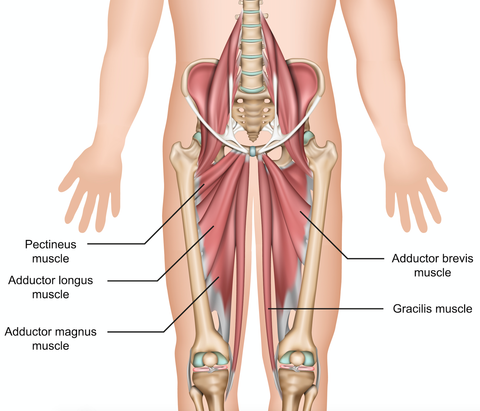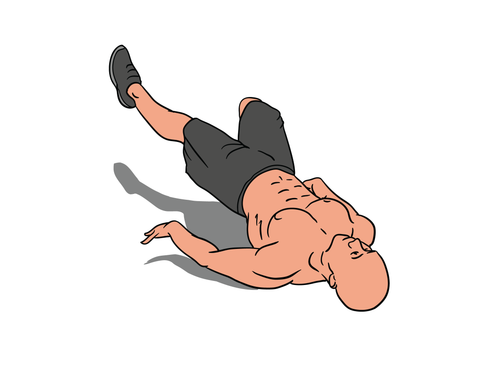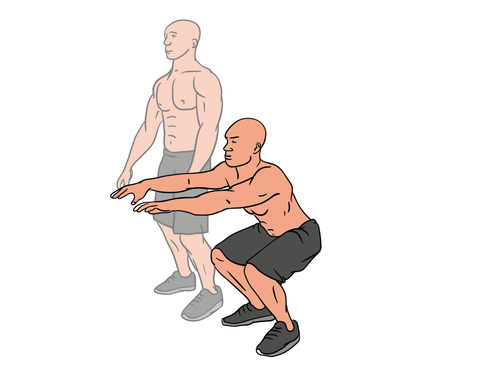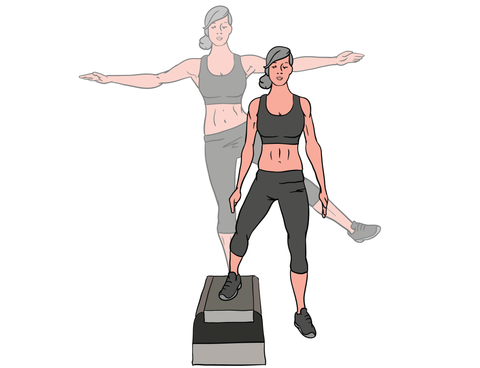How to Treat Groin Strains and Hip Pain
Groin Strain Injuries
Groin strain occurs when the muscles of the pelvis are overstretched. This can be caused by running, jumping, or changing direction quickly. The muscle that is usually affected by a groin strain is the adductor brevis. It is a short muscle that attaches above the knee.
When the muscle is torn, it will cause a sharp pain. You may also experience bruising in the area. A groin strain can be a serious injury, and you should seek medical attention immediately. Depending on the severity of the injury, it can take several weeks for the injury to heal.
In the first few days after the injury, your doctor will likely recommend rest. Your doctor may also order a physical therapy appointment or an MRI to help diagnose the condition. In some severe cases may need surgery. However, these types of severe injuries are rare comparatively and most groin strains will respond to conservative treatment and rest so long as they are correctly diagnosed and treated.
When you have a groin strain, you should not try to move your leg too much. During rehabilitation, a physical therapist will help you strengthen the muscles of your hip and thigh. Ideally they will also use the treatment sessions to teach you how to avoid future injuries.
A groin strain is not an uncommon occurrence, especially in athletes. Generally, it can be prevented if you know how to exercise correctly. Several exercises are recommended to improve your strength and flexibility. Practicing these exercises at home can be a good way to prevent a groin strain.
During recovery, your therapist will teach you how to reduce the pain and swelling. They will also suggest a home exercise program to help you get back to normal activity as soon as possible.
As with other injuries, you should take care to keep the injured area warm and comfortable. Ice can be used to reduce the swelling and pain. An ice pack can be applied to the injured area for three to four times a day for fifteen minutes at a time. NSAIDs are commonly used as pain relievers. Ibuprofen is another option, and it can be taken as acetaminophen. Always consult your physician or athletic trainer before taking any medicines (including natural non-pharma remedies).
Using a strapping technique, elastic wrap, or cold-therapy machine can also help you recover. These techniques are part of the RICE principles. Also, be sure to use the proper type of compression clothing during your rehabilitation. Compression shorts are a good choice because they keep your muscles warm and supported.
Hip Adductors - Trigger Point Anatomy
Sports Massage Therapy For Groin Strain
Sports massage for groin strain is an effective therapy that helps patients return to sports activities sooner. It also reduces muscle tightness and flushes toxins.
Groin strains happen in a variety of settings, from recreational activities to professional sports. Symptoms include pain, swelling, and bruising. The first stage of treatment typically involves compression, rest, and ice.
A comprehensive rehabilitation program can improve healing and prevent recurrent injuries. If you have a groin strain, you may need a physical therapist to perform a full rehabilitation program. Your physical therapist can also prescribe exercises that you can do at home between visits to improve your strength and range of motion.
You should visit your primary care physician as soon as you notice symptoms. This will allow your doctor to assess the underlying causes of your groin strain. He or she will likely perform an X-ray and order further tests to confirm the diagnosis.
Groin strains are common in runners and athletes. They can affect the adductor muscles, which are located on the inner side of the thigh. These muscles help you draw your leg together and pull your hips back.
During the initial stages of a groin strain, you should avoid doing any strenuous exercise. Instead, you should focus on gentle, stretches to keep your muscles strong and flexible.
After four days of the injury, you should begin sports massage for groin strain. The massage can help alleviate the pain and increase blood flow. However, it is important not to start the massage too early. That could aggravate the condition.
Acupuncture For Groin Strain
A groin strain is a muscle injury that causes pain and swelling. Generally it is important to start to treat the strain in the first 24 hours so that you can minimize the inflammation.
If you have a groin strain, you may want to consider acupuncture treatment.
Acupuncture may work on your condition by regulating your nerves and reducing inflammation. In addition, it can improve the blood flow in the affected area. You can get acupuncture treatment in conjunction with other therapies, including massage.
During your treatment, your therapist may ask you specific questions about where the pain is. Your therapist may also recommend home exercises to strengthen the muscles and increase the mobility of your hip.
If you're experiencing a groin strain, it's best to avoid activities that make the pain worse. Your therapist can also help you to reduce pain and get back to your regular routine as quickly as possible.
To prevent a groin strain from occurring, it's a good idea to stretch and strengthen the muscles in the lower and upper leg and abdomen. Doing so can also help your groin muscles heal faster.
Tendinitis of the Adductor Muscles - The pain is similar to a groin strain but onset is gradual and chronic in nature
Inflammation in the adductor muscle tendons or tendon sheaths due to overuse can cause pain in the groin area. Sprinting, football, soccer, hurdling and horse riding can all cause overuse in these muscles. Unresolved injuries such as groin strain can also lead to tendinitis.
The adductor muscles include the pectineus, adductor longus, adductor brevis, gracilis and adductor magnus and the tendons of any of these may become inflamed. The pain is similar to a groin strain but onset is gradual and chronic in nature.

Cause of injury
Repetitive stress to the adductor muscles. Previous injury such as groin strain. Tight gluteal muscles.Trigger points that cause their host muscles to become shorter, tighter, and less efficient.
Signs and symptoms
Pain in the groin area. Pain when bringing the legs together against resistance. Pain when running, especially sprinting.
Complications (if left unattended)
If left unattended, tendinitis of the adductor muscles can lead to imbalance and injury to the other muscles of the hip joint. It can also result in a tear of one or more of the adductor muscles.
Immediate Treatment
Ice and rest from activities that cause pain. Anti-inflammatory medication. Heat and massage to promote blood flow and healing.
Rehabilitation and Prevention
Rehabilitation for tendinitis of the adductors starts with gradual reintroduction into activity with stretching and strengthening exercises for the affected muscles. Use heat packs on the affected area before exercise at first, then continue with good warm-up activities to make sure the muscles are ready for activity.
Strengthening the adductors and stretching the opposing abductors will help prevent this injury from recurring. Rehabilitating all groin pulls and other hip injuries completely will also prevent problems with the adductors.
Long-Term Prognosis
Long-term problems are seldom seen with tendinitis of the adductor muscles after treatment. If pain and limited mobility in the hip persists, additional investigations may be required from a sports medicine specialist.
Useful Rehabilitation Exercises

Lunge
With a dumbbell in each hand resting at your sides, step forward with one foot while letting your opposite knee fall almost to the ground. Push upward, returning to the start position, then step forward with your other foot letting your other knee do the same.

Single-legged gluteal raise hold
Lie on your back with your arms at your sides. Keep one leg straight and bring the other foot up towards your backside. Raise your backside off the ground, hold for a second and then lower again. Repeat with your other leg.

Body weight squat
With your feet shoulder width apart, reach your hands out in front of you and bend your knees like you are about to sit in a chair. Slowly return to standing and repeat.

Side step lunge
With one foot elevated on a support, bring your arms out from your sides and lift your other leg up and away from your body to the side.
This blog is intended to be used for information purposes only and is not intended to be used for medical diagnosis or treatment or to substitute for a medical diagnosis and/or treatment rendered or prescribed by a physician or competent healthcare professional. This information is designed as educational material, but should not be taken as a recommendation for treatment of any particular person or patient. Always consult your physician if you think you need treatment or if you feel unwell.
Education Membership Plans
Unlimited Access to All Courses
$19.95/monthly
About Niel Asher Education
Niel Asher Education (NAT Global Campus) is a globally recognised provider of high-quality professional learning for hands-on health and movement practitioners. Through an extensive catalogue of expert-led online courses, NAT delivers continuing education for massage therapists, supporting both newly qualified and highly experienced professionals with practical, clinically relevant training designed for real-world practice.
Beyond massage therapy, Niel Asher Education offers comprehensive continuing education for physical therapists, continuing education for athletic trainers, continuing education for chiropractors, and continuing education for rehabilitation professionals working across a wide range of clinical, sports, and wellness environments. Courses span manual therapy, movement, rehabilitation, pain management, integrative therapies, and practitioner self-care, with content presented by respected educators and clinicians from around the world.
Known for its high production values and practitioner-focused approach, Niel Asher Education emphasises clarity, practical application, and professional integrity. Its online learning model allows practitioners to study at their own pace while earning recognised certificates and maintaining ongoing professional development requirements, making continuing education accessible regardless of location or schedule.
Through partnerships with leading educational platforms and organisations worldwide, Niel Asher Education continues to expand access to trusted, high-quality continuing education for massage therapists, continuing education for physical therapists, continuing education for athletic trainers, continuing education for chiropractors, and continuing education for rehabilitation professionals, supporting lifelong learning and professional excellence across the global therapy community.

Continuing Professional Education
Looking for Massage Therapy CEUs, PT and ATC continuing education, chiropractic CE, or advanced manual therapy training? Explore our evidence-based online courses designed for hands-on professionals.



















